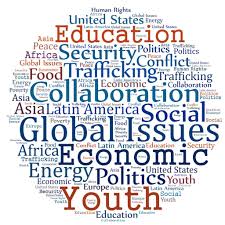Revitalizing Urban Spaces: Green Initiatives for Vibrant Global Communities

Updated at: 2023-08-13 18:01:36 (1 year ago by Melkisedeck Leon Shine)
Revitalizing Urban Spaces: Green Initiatives for Vibrant Global Communities
In today's rapidly evolving world, there is an increasing need to focus on the promotion of global sustainable cities and communities. As urbanization continues to reshape our planet, it is crucial that we prioritize the revitalization of urban spaces through green initiatives. By embracing environmentally-friendly practices, we can create vibrant and thriving communities that not only benefit the planet but also enhance the quality of life for its residents.
To achieve this goal, here are 15 detailed points to consider when it comes to revitalizing urban spaces and promoting global sustainable cities and communities:
-
Invest in renewable energy: Encourage the use of solar panels, wind turbines, and other renewable energy sources within urban areas to reduce dependence on fossil fuels and combat climate change.
-
Implement efficient waste management systems: Develop comprehensive recycling programs, waste-to-energy projects, and sustainable waste disposal strategies to minimize pollution and landfill usage.
-
Promote sustainable transportation: Improve public transportation systems, invest in electric vehicle infrastructure, and encourage walking and cycling to reduce congestion and air pollution.
-
Design green spaces: Integrate parks, gardens, and green rooftops into urban planning to provide residents with access to nature, improve air quality, and create social gathering places.
-
Foster community gardens: Encourage citizens to participate in community gardening initiatives, creating opportunities for sustainable food production, education, and neighborhood cohesion.
-
Preserve cultural heritage: Incorporate the preservation of historical buildings and landmarks into urban development plans, ensuring the cultural identity and uniqueness of the community are maintained.
-
Support local businesses: Promote local entrepreneurship and sustainable economic development by providing opportunities and incentives for small businesses to thrive, reducing the need for long commutes and supporting a sense of community.
-
Enhance public spaces: Improve the quality and accessibility of public spaces, such as plazas, squares, and waterfronts, to encourage social interaction, active lifestyles, and a sense of belonging.
-
Prioritize energy-efficient buildings: Implement green building standards and encourage the use of energy-efficient materials, insulation, and appliances to reduce energy consumption and carbon emissions.
-
Develop smart city technologies: Utilize innovative technologies, such as smart grids, automated energy management systems, and data analytics, to optimize resource usage and enhance overall efficiency.
-
Foster educational programs: Invest in education and awareness campaigns to promote sustainable practices and empower individuals to make environmentally-conscious choices in their daily lives.
-
Establish green certifications: Implement certification programs for sustainable buildings and communities to recognize and encourage environmentally-friendly practices, inspiring others to follow suit.
-
Encourage community involvement: Engage residents in the decision-making process of urban planning, ensuring their voices are heard, and fostering a sense of ownership and responsibility towards their communities.
-
Collaborate with global partners: Share best practices, knowledge, and experiences with other cities and countries worldwide, fostering a global network of sustainable cities and communities.
-
Foster a sense of global unity: Emphasize the interconnectedness of cities and communities across the globe, highlighting how collective efforts can create a better world for future generations.
By adopting these green initiatives and promoting global sustainable cities and communities, we have the power to make a significant positive impact on our planet. It is up to each and every one of us to take action, to develop the necessary skills, and to inspire others to join us on this journey towards a more sustainable future. Together, we can create vibrant and thriving urban spaces that not only benefit the environment but also nurture the well-being and unity of global communities.
Are you ready to take part in this global movement? Share this article and let's inspire others to join us on the path to a sustainable future. #SustainableCities #GlobalCommunities #RevitalizingUrbanSpaces




